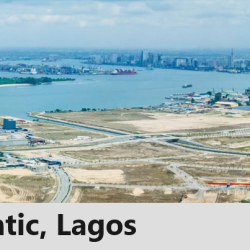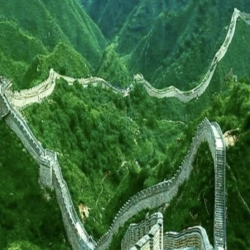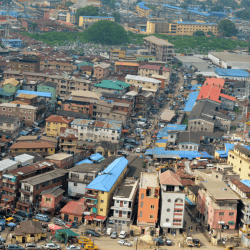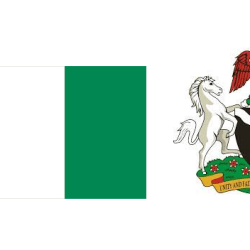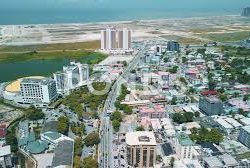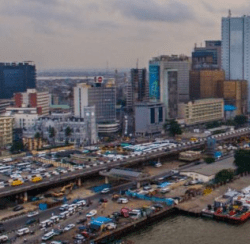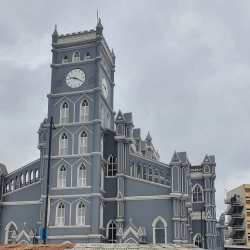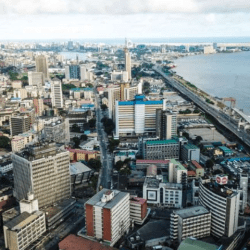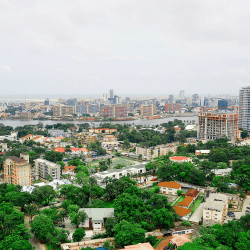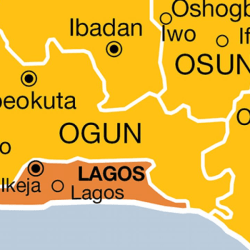The Great Wall of Lagos is a barrier that shields off the Atlantic Ocean from Lagos land and protects witting and unwitting Victoria Island residents and workers from the waters. The wall is an 8.5-kilometre seawall 9 metres high.
It is a critical achievement in the ongoing development of Eko Atlantic City, designed to protect Lagos’ coastal areas from the relentless forces of the Atlantic Ocean. The wall serves as a crucial safeguard against coastal erosion and flooding, especially for Victoria Island and the early phases of the Lekki Peninsula, which were vulnerable to severe ocean surges before the wall’s construction.
More than just a coastal defense system, the Great Wall of Lagos represents the intersection of environmental stewardship and economic ambition. By safeguarding Lagos’ coastal areas, it paves the way for future growth while protecting the city’s most vital assets. As Eko Atlantic City continues to develop, the Great Wall stands as a testament to human ingenuity and determination to coexist with nature’s powerful forces.
Background and Purpose
Before the construction of the Great Wall, Victoria Island and Lekki regularly faced flooding due to powerful waves from the Atlantic. The erosion was so severe that it threatened the very existence of Bar Beach, one of Lagos’ famous landmarks. This erosion problem was the result of natural ocean processes and human interventions, such as the construction of moles at the Port of Lagos, which altered the flow of sediments along the coastline.
The Great Wall of Lagos, which will reach a total length of 8.5 kilometers upon completion, has already proven successful in its primary goal: protecting Victoria Island from coastal erosion. Once fully completed, the wall will also safeguard the Lekki Peninsula, securing both regions from further ecological damage and enhancing their potential for urban development.
The Story Behind the Erosion
The region’s erosion problem stems from the littoral drift, a natural process where sand and sedimentary materials are carried along the West African coastline by ocean currents, typically moving from west to east. However, human interventions, such as river dams, port developments, and coastal disruptions (including shipwrecks), began to interrupt this flow over time. These interruptions led to significant coastal erosion in some areas and excessive sand buildup in others.
In Lagos, the erosion crisis began with the construction of rock moles at the entrance to the Port of Lagos. These moles were built to address the logistical challenges at the time. Before the moles were constructed, large ships delivering goods to Lagos had to anchor offshore in the Commodore Channel due to its shallow waters. Smaller vessels would then ferry cargo to the port, an inefficient process that hindered trade.
In response, marine engineers built the East and West Moles between 1905 and 1912. These moles allowed for the dredging of the Commodore Channel, enabling larger vessels to dock directly at the Port of Lagos, which significantly boosted trade and positioned Lagos as a leading economy in Africa.
The Unintended Consequence: Coastal Erosion
While the construction of the moles was beneficial for trade, it unintentionally disrupted the littoral drift. Sand and sediment that once naturally replenished Victoria Island and Lekki’s shorelines were now trapped west of the port. Consequently, severe erosion struck the coastline to the east, including Bar Beach, which lost approximately 2 kilometers of beachfront over a century. By 2005, Bar Beach had been almost completely eroded, leaving Victoria Island exposed to the full force of ocean surges.
Averting Ecological Disaster: The Need for the Great Wall
By the early 2000s, the situation was dire. Without urgent action, Victoria Island—one of Lagos’ major commercial hubs—risked being overwhelmed by the ocean. Businesses, residences, and valuable properties were under threat, and an ecological disaster seemed imminent.
In response, the ambitious Eko Atlantic City project was conceived, with the Great Wall of Lagos at its heart. The Great Wall was designed to serve as a robust barrier against the Atlantic, preventing further erosion and flooding while also laying the foundation for a new urban development that would enhance Lagos’ status as a global city.
The Role of the Great Wall in Eko Atlantic City
The Great Wall of Lagos plays a pivotal role in the Eko Atlantic City project, a large-scale development aimed at transforming a vulnerable coastline into a thriving metropolitan area. Eko Atlantic City will not only provide protection but also offer opportunities for new residential, commercial, and financial districts. The project is expected to attract investment and promote economic growth while addressing the environmental challenges faced by Lagos’ coastal regions.
How the Wall Works
The Great Wall is constructed with advanced engineering techniques, designed to withstand the powerful ocean currents and waves of the Atlantic. Its 8.5-kilometer length ensures comprehensive protection for Victoria Island and Lekki. The wall’s design also integrates features that help redirect ocean currents and prevent further erosion along the coastline.
This project showcases the importance of innovative infrastructure in tackling climate-related challenges, particularly in coastal cities that are vulnerable to rising sea levels and stronger storms.

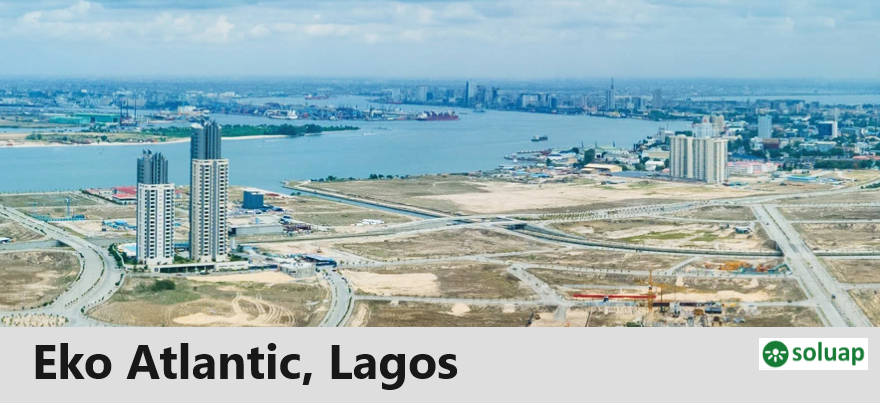
Current Status and Future Prospects
As of today, significant progress has been made on the Great Wall, with Victoria Island already benefiting from its protective shield. Once completed, the wall will extend protection to the entire Lekki Peninsula, securing Lagos’ coastline for future generations.
The Great Wall of Lagos not only offers a solution to the erosion problem but also serves as a symbol of Nigeria’s forward-thinking approach to urban development and environmental conservation. By addressing both ecological and economic needs, it promises to reshape Lagos into a safer, more resilient city capable of thriving in the face of natural challenges.
